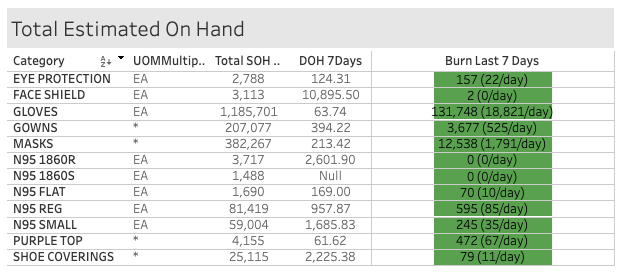
Unforeseen Disruptions in Healthcare Supply Chains
The sudden impact of COVID-19 has significantly altered operational landscapes for healthcare organizations worldwide, revealing vulnerabilities in supply chains that many had not anticipated. Hospitals and healthcare facilities—both acute and non-acute—have been thrust into crisis management modes, struggling to adapt to an unprecedented demand for supplies while maintaining inventory control. Supply chain leaders are keenly aware that access to reliable, trusted supply-related information is crucial for making informed decisions during emergencies. Without it, ensuring that frontline workers have the necessary supplies becomes a complex challenge.
The Challenge of Fragmented Supplier Data
One of the most pressing issues healthcare organizations face is the fragmentation of supplier information, which often resides in various systems across the organization. This lack of coherent data hampers decision-making. Doug Clark, Director of Supply Chain Services at Montage Health, acknowledges this issue: “We’ve been with BlueBin's BlueQ Analytics suite for six years now... it’s refreshing to work with people that are so open to new ideas.” This efficient communication and access to data underscore the importance of integrating technological solutions that streamline supply chain information and enhance operational efficiency.
In many cases, hospitals had to fight to maintain vendor and distributor management under uncertain conditions during the pandemic. Organizations have pivoted to produce what the world needs, drastically altering their regular production plans to ensure that essential supplies reach healthcare workers.
“We’ve been with BlueBin's BlueQ Analytics suite for six years now... it’s refreshing to work with people that are so open to new ideas.”
The Consequences of Insufficient Actionable Data
Healthcare facilities that lack actionable supply data may find themselves in a state of paralysis. Historically, the only substitute for actionable reporting was reliance on staff time and effort. However, many facilities currently lack both resources. With incomplete and untimely information, critical decisions can be delayed or misguided, leading to friction between nursing and supply chain management (SCM) staff, lost opportunities, and even failure. Clark describes how his organization approached this challenge: “By displaying the second page of our dashboard to our task force and the hospital incident command system every morning… I could just send a quick update, ‘Here’s where we’re at. These are the things we still need.’”
This proactive communication is vital in navigating uncertainty, ensuring that healthcare organizations can respond to supply chain pressures effectively.
“By displaying the second page of our dashboard to our task force and the hospital incident command system every morning… I could just send a quick update, ‘Here’s where we’re at. These are the things we still need.’”
![]()
Investing in Robust Data and Reporting Solutions
The COVID-19 pandemic has illustrated the critical importance of robust data analytics and reporting frameworks. Clark's team at Montage Health effectively utilized BlueQ Analytics to respond rapidly to new challenges. This included the creation of the Montage On the Go (MOGO) dashboard, developed to support three newly opened urgent care centers. Clark reflects, “BlueBin was able to build our COVID dashboard as an add-on to a custom-built dashboard. Then, just recently, we opened another dashboard called our MOGO dashboard… it got built within about a week.”
This flexibility highlights the essential role of analytics in providing real-time insights into inventory and operations, allowing healthcare facilities to pivot when unexpected needs arise. As Clark detailed, the dashboard provided the urgent care centers with their own login to access relevant data, enhancing operational visibility for their leadership.
“BlueBin was able to build our COVID dashboard as an add-on to a custom-built dashboard. Then, just recently, we opened another dashboard called our MOGO dashboard… it got built within about a week.”
![]()
Actionable Reporting: Enhancing Collaboration and Visibility
Implementing actionable reporting can enhance collaboration and communication across teams. Clark highlights the use of their COVID dashboard, which utilizes a visual green-yellow-red traffic light system for inventory levels: “If we go below six days of supply, it turns yellow. If we go below three, it’s red.” This clear cue helps supply chain leaders prioritize procurement efforts and manage distribution logistics effectively, safeguarding healthcare operations and maintaining patient care standards.
Healthcare leaders should foster collaborative relationships among supply chain teams and clinical staff to further ensure that everyone has the necessary resources at their fingertips.

Strategic Preparation for Future Crises
While healthcare organizations cannot anticipate when a crisis will occur, they can take strategic steps to prepare for potential disruptions. Some key recommendations include:
- Partnering with Experienced Supply Chain Firms: Collaborate with companies like BlueBin that specialize in hospital supply chain management to enhance visibility and responsiveness.
- Automating Data Processes: Implement technologies that enrich supply chain data, allowing teams to focus on higher-value tasks.
- Identifying Additional Suppliers: Establish connections with secondary and tertiary suppliers, ideally local, to minimize disruption risks.
- Embracing Continuous Change: Cultivate an adaptable culture among staff, ensuring they can quickly respond to evolving operational demands.
- Enhancing Reporting Systems: Invest in actionable reporting mechanisms that guarantee frontline workers have timely access to the supplies they need.
As Clark succinctly puts it, “Good quality supply chain data enables teams to foresee opportunities and gaps ahead of a crisis,” making data integrity a focal point for healthcare leaders.
Call to Action: Building Long-Term Resilience in Healthcare Supply Chains
By addressing supply chain and inventory management gaps now, healthcare organizations can tackle immediate challenges and lay the groundwork for sustainable practices. Good quality supply chain data not only helps prevent crises but also allows organizations to act decisively when unexpected situations arise. Improving supply chain resilience and enhancing emergency preparedness will enable healthcare facilities to deliver high-quality patient care, regardless of future disruptions.
“Good quality supply chain data enables teams to foresee opportunities and gaps ahead of a crisis,”
Now is the time for healthcare leaders to focus on resolving supply chain issues, identifying value-added partners, and implementing robust systems that can withstand the tests of time and crisis.
